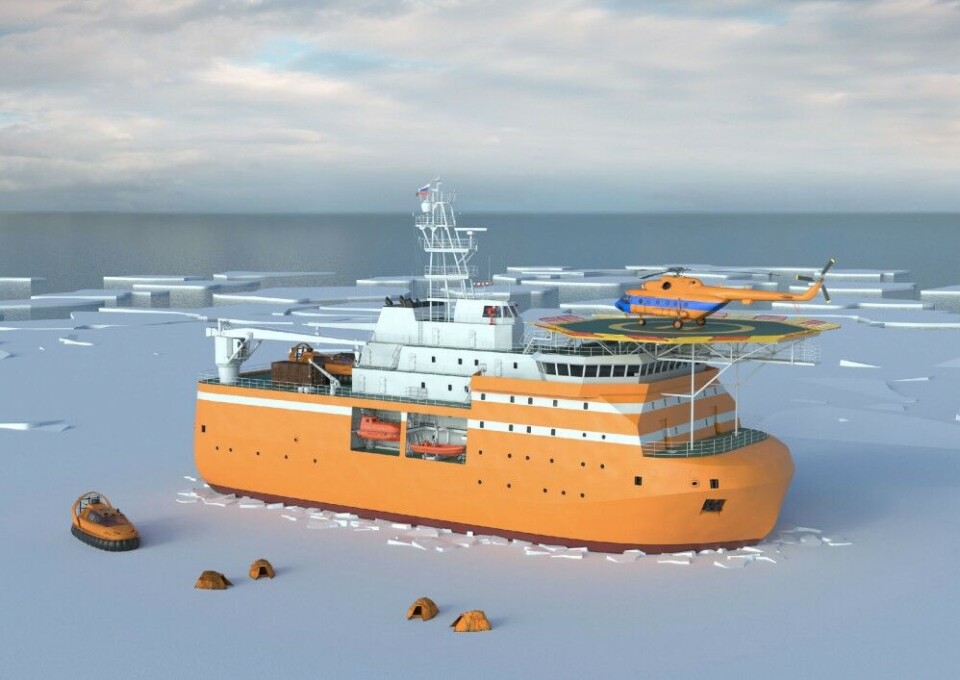
This is Russia’s new North Pole base
It will house up to 62 people and be able to move autonomously around in Arctic ice for up to two years.
p.p1 {margin: 0.0px 0.0px 4.8px 0.0px; line-height: 15.0px; font: 12.0px ‘Times New Roman’; color: #353535; -webkit-text-stroke: #353535; background-color: #ffffff}p.p2 {margin: 0.0px 0.0px 4.8px 0.0px; line-height: 15.0px; font: 12.0px ‘Times New Roman’; color: #353535; -webkit-text-stroke: #353535; background-color: #ffffff; min-height: 15.0px}p.p3 {margin: 0.0px 0.0px 10.6px 0.0px; line-height: 20.0px; font: 17.0px Georgia; color: #292929; -webkit-text-stroke: #292929; background-color: #ffffff}span.s1 {font-kerning: none}
The Russian Hydrometeorological Service (Roshydromet) has signed a contract with the Admiralty Yard in St. Petersburg over the construction of the North Pole research platform.
The floating self-propelled installation will have ice classification Arc8 and fuel supplies sufficient for two years of autonomous sailing. It will have a crew up to 14 people and can house 48 researchers.
It is to be completed in year 2020. Construction is expected to start early 2019.
«Today’s event marks the start of a principally new and comprehensive phase in the battle for scientific knowledge in the Arctic under condition of melting ice», Roshydromet leader Maksim Yakovenko said as he signed the construction contract with Admiralty Yard Director Aleksandr Buzakov.
«We are proud that Russia here is in the lead», Yakovlenko underlines.
«The new Arctic platform is made for year-round complex scientific studies in high altitudes in the Arctic Ocean», the Admiralty Yard informs. It has been engaged in project preparations for the last two years.
The yard has built several of Russia’s polar research vessels, among them the «Academician Treshnikov» from 2012.
The installation will be be 67,8 meters long and 22,5 meters wide, it will have a deadweight of 7,500 tons. The top speed will be “at least 10 knots”.
Preliminary investment costs amount to €98 million.
The North Pole platform is to replace Arctic research stations based on drifting ice floes.
The Soviet Union and later Russia has had floating research stations in the Arctic since 1937, with a break in the years 1991-2003.
During the last couple of years, it has become more and more difficult to find ice floes solid enough to hold a station.
The last “real” ice station, “North Pole-40”, was established in October 2012, and had to be evacuated in May 2013, because the ice floe the base was placed on, started to break apart.
















